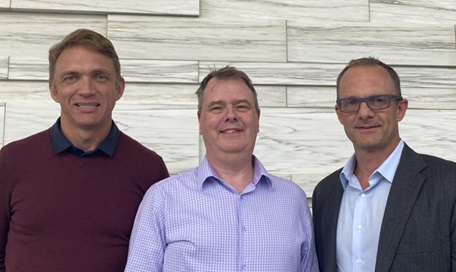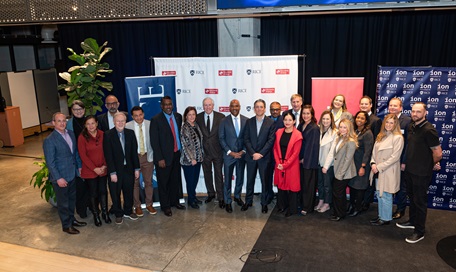Factory first
Woodside has joined with MAN Energy Solutions, a European-based multinational, to commercialise an innovative solution to produce LNG at lower cost and with a smaller footprint.

LNG production can now be achieved in more places, more simply, at lower cost and with a smaller footprint.
The solution is Factory LNG and by targeting small to mid-scale projects it will displace higher-emission fuels.
Since its inception at Woodside, the Factory LNG team has identified step-change reductions in both execution and operational risks. The technology program required a broad collaborative effort from our organisation as well as our partners.
Woodside has joined with MAN Energy Solutions, a European-based multinational, to commercialise the innovative solution.
The collaboration combines Woodside’s intellectual property and LNG experience with MAN’s global manufacturing and project-execution expertise.
Business Disruption Program Manager Steven Cooper has been pursuing Factory LNG at Woodside for five years and says the concept centres on a manufacturing-led process where the most complex part an LNG train is built, tested and then delivered to site – complete.
Steven says Factory LNG is the natural progression in the construction of LNG trains: from the original “stick built” where equipment and materials are delivered and built on site; to fabrication yards, where big modules are made and transported to site; to the manufacture and delivery of completed units from a factory.
“Customers can increase the number of Factory LNG containers used as the market grows, allowing investment to keep pace with demand,” Steven explains.
“Factory LNG only tackles the liquefaction of the natural gas.
“However, that’s typically the most complex, time consuming and expensive part of an LNG development.”
The unit offers 10 years low-to-no touch maintenance and its compactness allows it to adapt to site constraints.
Moreover, the electrically powered, hermetically sealed units will reduce the carbon footprint of projects by allowing customers to use the lowest emission power generation available as well as eliminating fugitive emissions to the environment.
Steven says the concept has three drivers: keep schedules and costs under control; minimise any time spent on-site; and make safe solutions which work as well as, and require about as much maintenance as, a domestic fridge.
The concept involves a nominal 50,000 tonnes per annum unit (the size of a 40-foot shipping container) that can be transported via standard heavy-lift shipping and trucking logistics.
Vice President Technology Jason Crusan describes Factory LNG as a simple and reliable solution for end users that offers an attractive, accessible option for displacing fuels such as diesel with cleaner and cheaper LNG.
“Woodside is committed to diversifying markets for LNG, including as a lower-emissions fuel for activities such as trucking and shipping,” Jason says.
“The Factory LNG system also brings potential for green fuel production by coupling it with synthetic methane units or bio-gas production.
“Factory LNG could revolutionise the way LNG is produced, with lower costs and lower health, safety and environment risks.”
Steven sums up the experience: “It’s exciting to play a leading role in commercialising Woodside know-how and experience to support the global challenge and demand for a lower carbon future.”



